2. Insert the top compression ring into the first cylinder and push it with the piston crown into the bottom of the cylinder. In this case, the ring will be located perpendicular to the walls of the cylinder (see fig. 17.2). Move the ring to the area of its location corresponding to BDC.
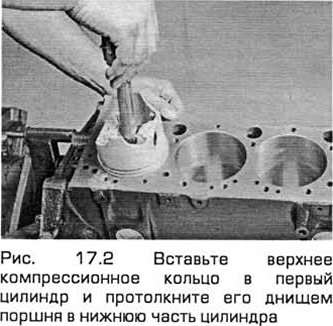
3. To measure the end gap of the rings, insert feeler gauges between the ends of the ring until you select a feeler gauge that matches the width of the gap (see fig. 17.3). The probe should enter the gap with little resistance. Compare the measurement result with the Specifications. If the clearance is greater or less than specified, recheck to make sure you are checking the correct rings. If the result of the measurements does not satisfy you, then you need to have the cylinders checked by dealers, who can determine exactly which of the components is worn out and recommend the best way to restore the engine.
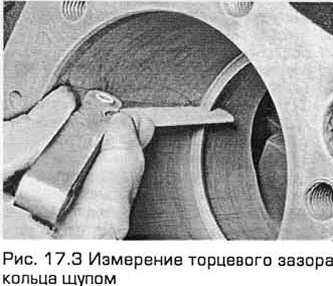
4. If the end gap in the ring is too small, then it can be increased by filing the ends with a needle file. If the gap is large, then this is normal, as long as it does not exceed the established limit. If the clearance is greater than the regulated limit, then the dimensions of all components must be checked, as well as new spare parts.
5. Repeat the procedure for all the gauges that you will install in the first cylinder, as well as in the remaining cylinders. Install the components in their places.
6. Install piston rings as follows. If you will install the old rings, then do not forget about the marks made during removal so that the rings fall into place and stand in them with the appropriate side. New rings usually have top surface markings (as an indication of the type size "STO" or "TOR"). Rings must be installed with the marking up (see fig. 17.6).
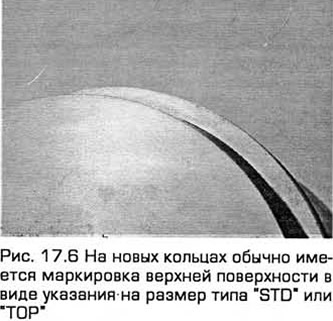
Note: Always follow the instructions supplied with the gauge kit. Do not interchange the top and second compression rings, as they usually have different sections.
7. Oil scraper ring (the bottom of the piston) usually installed first. It consists of three separate sections. Pull the middle section into the groove (see fig. 17.7,a). If there is an anti-rotation element, make sure it is inserted into the hole located in the ring groove. Then insert the bottom section of the ring. Do not use a piston ring installer when installing the oil scraper ring sections, so as not to damage them, but proceed as follows. Insert one end of the section into the groove between the middle section and the thorium of the groove, lock it in place and, by running your finger around the piston, push the section into the groove (see fig. 17.7.6). Install the top section in the same way.
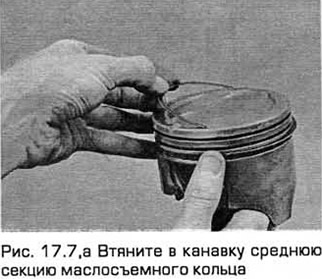
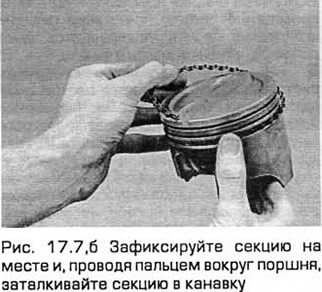
8. After installing the three sections of the oil wiper ring, make sure that the top and bottom sections turn freely in the groove.
9. The second compression ring is installed after the oil scraper. And after it you need to install the upper compression ring. Install these rings with the markings up and do not confuse them. Do not open the ring more than necessary in order to put it back into place.
10. After installing the piston rings, position their end gaps at 120°to each other. Follow the same procedure for the remaining pistons and rings.
Visitor comments